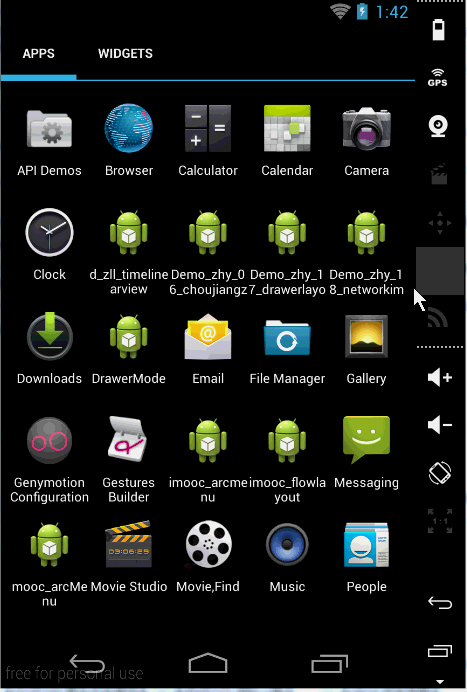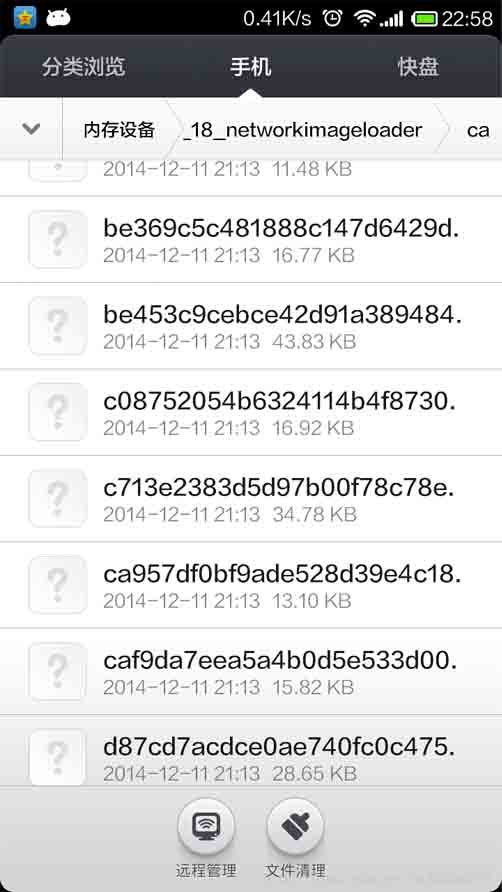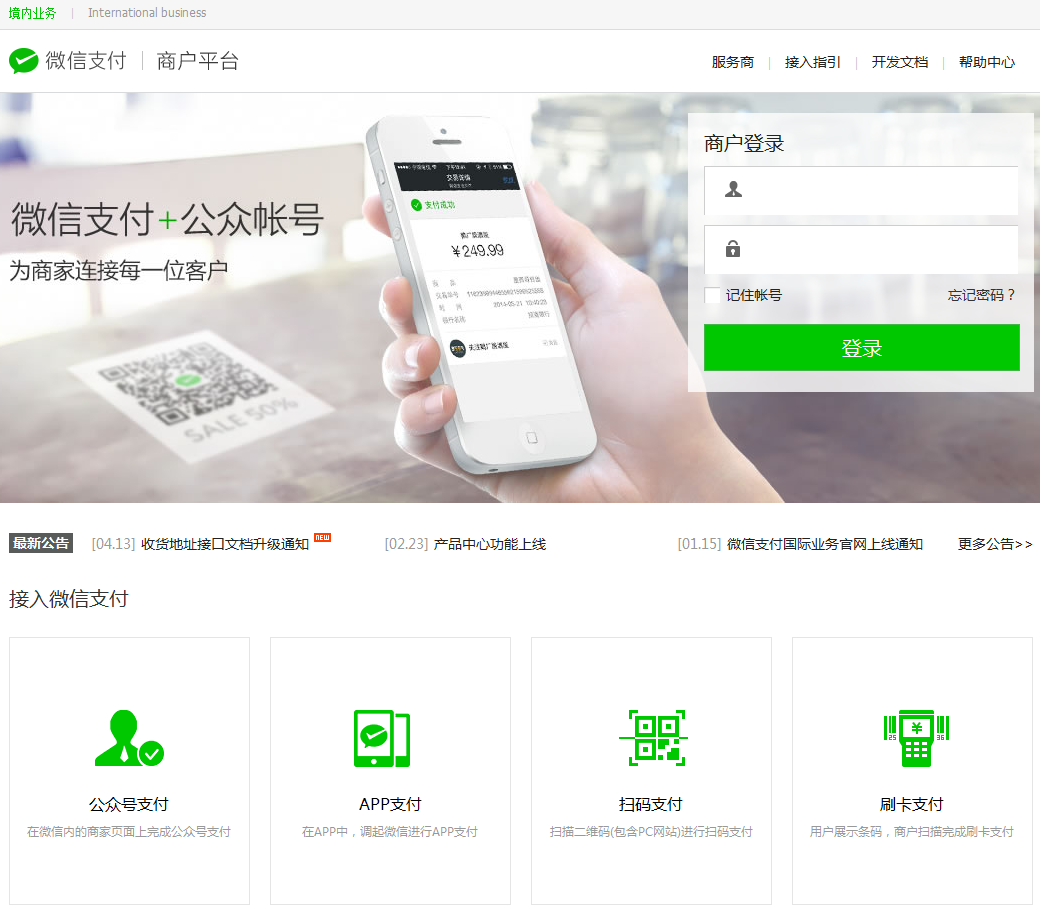編輯:關於Android編程
1、概述
優秀的圖片加載框架不要太多,什麼UIL , Volley ,Picasso,Imageloader等等。但是作為一名合格的程序猿,必須懂其中的實現原理,於是乎,今天我就帶大家一起來設計一個加載網絡、本地的圖片框架。有人可能會說,自己寫會不會很渣,運行效率,內存溢出神馬的。放心,我們拿demo說話,拼得就是速度,奏事這麼任性。
關於加載本地圖片,當然了,我手機圖片比較少,7000來張:
1、首先肯定不能內存溢出,但是尼瑪現在像素那麼高,怎麼才能保證呢?我相信利用LruCache統一管理你的圖片是個不二的選擇,所有的圖片從LruCache裡面取,保證所有的圖片的內存不會超過預設的空間。
2、加載速度要剛剛的,我一用力,滑動到3000張的位置,你要是還在從第一張給我加載,尼瑪,你以為我打dota呢。所以我們需要引入加載策略,我們不能FIFO,我們選擇LIFO,當前呈現給用戶的,最新加載;當前未呈現的,選擇加載。
3、使用方便。一般圖片都會使用GridView作為控件,在getView裡面進行圖片加載,當然了為了不錯亂,可能還需要用戶去自己setTag,自己寫回調設置圖片。當然了,我們不需要這麼麻煩,一句話IoadImage(imageview,path)即可,剩下的請交給我們的圖片加載框架處理。
做到以上幾點,關於本地的圖片加載應該就木有什麼問題了。
關於加載網絡圖片,其實原理差不多,就多了個是否啟用硬盤緩存的選項,如果啟用了,加載時,先從內存中查找,然後從硬盤上找,最後去網絡下載。下載完成後,別忘了寫入硬盤,加入內存緩存。如果沒有啟用,那麼就直接從網絡壓縮獲取,加入內存即可。
2、效果圖
終於扯完了,接下來,簡單看個效果圖,關於加載本地圖片的效果圖:可以從Android 超高仿微信圖片選擇器 圖片該這麼加載這篇博客中下載Demo運行。
下面演示一個網絡加載圖片的例子:

80多張從網絡加載的圖片,可以看到我直接拖到最後,基本是呈現在用戶眼前的最先加載,要是從第一張到80多,估計也是醉了。
此外:圖片來自老郭的博客,感謝!!!ps:如果你覺得圖片不勁爆,Day Day Up找老郭去。
3、完全解析
1、關於圖片的壓縮
不管是從網絡還是本地的圖片,加載都需要進行壓縮,然後顯示:
用戶要你壓縮顯示,會給我們什麼?一個imageview,一個path,我們的職責就是壓縮完成後顯示上去。
1、本地圖片的壓縮
a、獲得imageview想要顯示的大小
想要壓縮,我們第一步應該是獲得imageview想要顯示的大小,沒大小肯定沒辦法壓縮?
那麼如何獲得imageview想要顯示的大小呢?
/**
* 根據ImageView獲適當的壓縮的寬和高
*
* @param imageView
* @return
*/
public static ImageSize getImageViewSize(ImageView imageView)
{
ImageSize imageSize = new ImageSize();
DisplayMetrics displayMetrics = imageView.getContext().getResources()
.getDisplayMetrics();
LayoutParams lp = imageView.getLayoutParams();
int width = imageView.getWidth();// 獲取imageview的實際寬度
if (width <= 0)
{
width = lp.width;// 獲取imageview在layout中聲明的寬度
}
if (width <= 0)
{
// width = imageView.getMaxWidth();// 檢查最大值
width = getImageViewFieldValue(imageView, "mMaxWidth");
}
if (width <= 0)
{
width = displayMetrics.widthPixels;
}
int height = imageView.getHeight();// 獲取imageview的實際高度
if (height <= 0)
{
height = lp.height;// 獲取imageview在layout中聲明的寬度
}
if (height <= 0)
{
height = getImageViewFieldValue(imageView, "mMaxHeight");// 檢查最大值
}
if (height <= 0)
{
height = displayMetrics.heightPixels;
}
imageSize.width = width;
imageSize.height = height;
return imageSize;
}
public static class ImageSize
{
int width;
int height;
}
可以看到,我們拿到imageview以後:
首先企圖通過getWidth獲取顯示的寬;有些時候,這個getWidth返回的是0;
那麼我們再去看看它有沒有在布局文件中書寫寬;
如果布局文件中也沒有精確值,那麼我們再去看看它有沒有設置最大值;
如果最大值也沒設置,那麼我們只有拿出我們的終極方案,使用我們的屏幕寬度;
總之,不能讓它任性,我們一定要拿到一個合適的顯示值。
可以看到這裡或者最大寬度,我們用的反射,而不是getMaxWidth();維薩呢,因為getMaxWidth竟然要API 16,我也是醉了;為了兼容性,我們采用反射的方案。反射的代碼就不貼了。
b、設置合適的inSampleSize
我們獲得想要顯示的大小,為了什麼,還不是為了和圖片的真正的寬高做比較,拿到一個合適的inSampleSize,去對圖片進行壓縮麼。
那麼首先應該是拿到圖片的寬和高:
// 獲得圖片的寬和高,並不把圖片加載到內存中
BitmapFactory.Options options = new BitmapFactory.Options();
options.inJustDecodeBounds = true;
BitmapFactory.decodeFile(path, options);
這三行就成功獲取圖片真正的寬和高了,存在我們的options裡面;
然後我們就可以happy的去計算inSampleSize了:
/**
* 根據需求的寬和高以及圖片實際的寬和高計算SampleSize
*
* @param options
* @param width
* @param height
* @return
*/
public static int caculateInSampleSize(Options options, int reqWidth,
int reqHeight)
{
int width = options.outWidth;
int height = options.outHeight;
int inSampleSize = 1;
if (width > reqWidth || height > reqHeight)
{
int widthRadio = Math.round(width * 1.0f / reqWidth);
int heightRadio = Math.round(height * 1.0f / reqHeight);
inSampleSize = Math.max(widthRadio, heightRadio);
}
return inSampleSize;
}
options裡面存了實際的寬和高;reqWidth和reqHeight就是我們之前得到的想要顯示的大小;經過比較,得到一個合適的inSampleSize;
有了inSampleSize:
options.inSampleSize = ImageSizeUtil.caculateInSampleSize(options,
width, height);
// 使用獲得到的InSampleSize再次解析圖片
options.inJustDecodeBounds = false;
Bitmap bitmap = BitmapFactory.decodeFile(path, options);
return bitmap;
經過這幾行,就完成圖片的壓縮了。
上述是本地圖片的壓縮,那麼如果是網絡圖片呢?
2、網絡圖片的壓縮
a、直接下載存到sd卡,然後采用本地的壓縮方案。這種方式當前是在硬盤緩存開啟的情況下,如果沒有開啟呢?
b、使用BitmapFactory.decodeStream(is, null, opts);
/**
* 根據url下載圖片在指定的文件
*
* @param urlStr
* @param file
* @return
*/
public static Bitmap downloadImgByUrl(String urlStr, ImageView imageview)
{
FileOutputStream fos = null;
InputStream is = null;
try
{
URL url = new URL(urlStr);
HttpURLConnection conn = (HttpURLConnection) url.openConnection();
is = new BufferedInputStream(conn.getInputStream());
is.mark(is.available());
Options opts = new Options();
opts.inJustDecodeBounds = true;
Bitmap bitmap = BitmapFactory.decodeStream(is, null, opts);
//獲取imageview想要顯示的寬和高
ImageSize imageViewSize = ImageSizeUtil.getImageViewSize(imageview);
opts.inSampleSize = ImageSizeUtil.caculateInSampleSize(opts,
imageViewSize.width, imageViewSize.height);
opts.inJustDecodeBounds = false;
is.reset();
bitmap = BitmapFactory.decodeStream(is, null, opts);
conn.disconnect();
return bitmap;
} catch (Exception e)
{
e.printStackTrace();
} finally
{
try
{
if (is != null)
is.close();
} catch (IOException e)
{
}
try
{
if (fos != null)
fos.close();
} catch (IOException e)
{
}
}
return null;
}
基本和本地壓縮差不多,也是兩次取樣,當然需要注意一點,我們的is進行了包裝,以便可以進行reset();直接返回的is是不能使用兩次的。
到此,圖片壓縮說完了。
2、圖片加載框架的架構
我們的圖片壓縮加載完了,那麼就應該放入我們的LruCache,然後設置到我們的ImageView上。
好了,接下來我們來說說我們的這個框架的架構;
1、單例,包含一個LruCache用於管理我們的圖片;
2、任務隊列,我們每來一次加載圖片的請求,我們會封裝成Task存入我們的TaskQueue;
3、包含一個後台線程,這個線程在第一次初始化實例的時候啟動,然後會一直在後台運行;任務呢?還記得我們有個任務隊列麼,有隊列存任務,得有人干活呀;所以,當每來一次加載圖片請求的時候,我們同時發一個消息到後台線程,後台線程去使用線程池去TaskQueue去取一個任務執行;
4、調度策略;3中說了,後台線程去TaskQueue去取一個任務,這個任務不是隨便取的,有策略可以選擇,一個是FIFO,一個是LIFO,我傾向於後者。
好了,基本就這些結構,接下來看我們具體的實現。
3、具體的實現
1、構造方法
public static ImageLoader getInstance(int threadCount, Type type)
{
if (mInstance == null)
{
synchronized (ImageLoader.class)
{
if (mInstance == null)
{
mInstance = new ImageLoader(threadCount, type);
}
}
}
return mInstance;
}
這個就不用說了,重點看我們的構造方法
/**
* 圖片加載類
*
* @author zhy
*
*/
public class ImageLoader
{
private static ImageLoader mInstance;
/**
* 圖片緩存的核心對象
*/
private LruCache<String, Bitmap> mLruCache;
/**
* 線程池
*/
private ExecutorService mThreadPool;
private static final int DEAFULT_THREAD_COUNT = 1;
/**
* 隊列的調度方式
*/
private Type mType = Type.LIFO;
/**
* 任務隊列
*/
private LinkedList<Runnable> mTaskQueue;
/**
* 後台輪詢線程
*/
private Thread mPoolThread;
private Handler mPoolThreadHandler;
/**
* UI線程中的Handler
*/
private Handler mUIHandler;
private Semaphore mSemaphorePoolThreadHandler = new Semaphore(0);
private Semaphore mSemaphoreThreadPool;
private boolean isDiskCacheEnable = true;
private static final String TAG = "ImageLoader";
public enum Type
{
FIFO, LIFO;
}
private ImageLoader(int threadCount, Type type)
{
init(threadCount, type);
}
/**
* 初始化
*
* @param threadCount
* @param type
*/
private void init(int threadCount, Type type)
{
initBackThread();
// 獲取我們應用的最大可用內存
int maxMemory = (int) Runtime.getRuntime().maxMemory();
int cacheMemory = maxMemory / 8;
mLruCache = new LruCache<String, Bitmap>(cacheMemory)
{
@Override
protected int sizeOf(String key, Bitmap value)
{
return value.getRowBytes() * value.getHeight();
}
};
// 創建線程池
mThreadPool = Executors.newFixedThreadPool(threadCount);
mTaskQueue = new LinkedList<Runnable>();
mType = type;
mSemaphoreThreadPool = new Semaphore(threadCount);
}
/**
* 初始化後台輪詢線程
*/
private void initBackThread()
{
// 後台輪詢線程
mPoolThread = new Thread()
{
@Override
public void run()
{
Looper.prepare();
mPoolThreadHandler = new Handler()
{
@Override
public void handleMessage(Message msg)
{
// 線程池去取出一個任務進行執行
mThreadPool.execute(getTask());
try
{
mSemaphoreThreadPool.acquire();
} catch (InterruptedException e)
{
}
}
};
// 釋放一個信號量
mSemaphorePoolThreadHandler.release();
Looper.loop();
};
};
mPoolThread.start();
}
在貼構造的時候,順便貼出所有的成員變量;
在構造中我們調用init,init中可以設置後台加載圖片線程數量和加載策略;init中首先初始化後台線程initBackThread(),可以看到這個後台線程,實際上是個Looper最終在那不斷的loop,我們還初始化了一個mPoolThreadHandler用於發送消息到此線程;
接下來就是初始化mLruCache , mThreadPool ,mTaskQueue 等;
2、loadImage
構造完成以後,當然是使用了,用戶調用loadImage傳入(final String path, final ImageView imageView,final boolean isFromNet)就可以完成本地或者網絡圖片的加載。
/**
* 根據path為imageview設置圖片
*
* @param path
* @param imageView
*/
public void loadImage(final String path, final ImageView imageView,
final boolean isFromNet)
{
imageView.setTag(path);
if (mUIHandler == null)
{
mUIHandler = new Handler()
{
public void handleMessage(Message msg)
{
// 獲取得到圖片,為imageview回調設置圖片
ImgBeanHolder holder = (ImgBeanHolder) msg.obj;
Bitmap bm = holder.bitmap;
ImageView imageview = holder.imageView;
String path = holder.path;
// 將path與getTag存儲路徑進行比較
if (imageview.getTag().toString().equals(path))
{
imageview.setImageBitmap(bm);
}
};
};
}
// 根據path在緩存中獲取bitmap
Bitmap bm = getBitmapFromLruCache(path);
if (bm != null)
{
refreashBitmap(path, imageView, bm);
} else
{
addTask(buildTask(path, imageView, isFromNet));
}
}
首先我們為imageview.setTag;然後初始化一個mUIHandler,不用猜,這個mUIHandler用戶更新我們的imageview,因為這個方法肯定是主線程調用的。
然後調用:getBitmapFromLruCache(path);根據path在緩存中獲取bitmap;如果找到那麼直接去設置我們的圖片;
private void refreashBitmap(final String path, final ImageView imageView,
Bitmap bm)
{
Message message = Message.obtain();
ImgBeanHolder holder = new ImgBeanHolder();
holder.bitmap = bm;
holder.path = path;
holder.imageView = imageView;
message.obj = holder;
mUIHandler.sendMessage(message);
}
可以看到,如果找到圖片,則直接使用UIHandler去發送一個消息,當然了攜帶了一些必要的參數,然後UIHandler的handleMessage中完成圖片的設置;
handleMessage中拿到path,bitmap,imageview;記得必須要:
// 將path與getTag存儲路徑進行比較
if (imageview.getTag().toString().equals(path))
{
imageview.setImageBitmap(bm);
}
否則會造成圖片混亂。
如果沒找到,則通過buildTask去新建一個任務,在addTask到任務隊列。
buildTask就比較復雜了,因為還涉及到本地和網絡,所以我們先看addTask代碼:
private synchronized void addTask(Runnable runnable)
{
mTaskQueue.add(runnable);
// if(mPoolThreadHandler==null)wait();
try
{
if (mPoolThreadHandler == null)
mSemaphorePoolThreadHandler.acquire();
} catch (InterruptedException e)
{
}
mPoolThreadHandler.sendEmptyMessage(0x110);
}
很簡單,就是runnable加入TaskQueue,與此同時使用mPoolThreadHandler(這個handler還記得麼,用於和我們後台線程交互。)去發送一個消息給後台線程,叫它去取出一個任務執行;具體代碼:
mPoolThreadHandler = new Handler()
{
@Override
public void handleMessage(Message msg)
{
// 線程池去取出一個任務進行執行
mThreadPool.execute(getTask());
直接使用mThreadPool線程池,然後使用getTask去取一個任務。
/**
* 從任務隊列取出一個方法
*
* @return
*/
private Runnable getTask()
{
if (mType == Type.FIFO)
{
return mTaskQueue.removeFirst();
} else if (mType == Type.LIFO)
{
return mTaskQueue.removeLast();
}
return null;
}
getTask代碼也比較簡單,就是根據Type從任務隊列頭或者尾進行取任務。
現在你會不會好奇,任務裡面到底什麼代碼?其實我們也就剩最後一段代碼了buildTask
/**
* 根據傳入的參數,新建一個任務
*
* @param path
* @param imageView
* @param isFromNet
* @return
*/
private Runnable buildTask(final String path, final ImageView imageView,
final boolean isFromNet)
{
return new Runnable()
{
@Override
public void run()
{
Bitmap bm = null;
if (isFromNet)
{
File file = getDiskCacheDir(imageView.getContext(),
md5(path));
if (file.exists())// 如果在緩存文件中發現
{
Log.e(TAG, "find image :" + path + " in disk cache .");
bm = loadImageFromLocal(file.getAbsolutePath(),
imageView);
} else
{
if (isDiskCacheEnable)// 檢測是否開啟硬盤緩存
{
boolean downloadState = DownloadImgUtils
.downloadImgByUrl(path, file);
if (downloadState)// 如果下載成功
{
Log.e(TAG,
"download image :" + path
+ " to disk cache . path is "
+ file.getAbsolutePath());
bm = loadImageFromLocal(file.getAbsolutePath(),
imageView);
}
} else
// 直接從網絡加載
{
Log.e(TAG, "load image :" + path + " to memory.");
bm = DownloadImgUtils.downloadImgByUrl(path,
imageView);
}
}
} else
{
bm = loadImageFromLocal(path, imageView);
}
// 3、把圖片加入到緩存
addBitmapToLruCache(path, bm);
refreashBitmap(path, imageView, bm);
mSemaphoreThreadPool.release();
}
};
}
private Bitmap loadImageFromLocal(final String path,
final ImageView imageView)
{
Bitmap bm;
// 加載圖片
// 圖片的壓縮
// 1、獲得圖片需要顯示的大小
ImageSize imageSize = ImageSizeUtil.getImageViewSize(imageView);
// 2、壓縮圖片
bm = decodeSampledBitmapFromPath(path, imageSize.width,
imageSize.height);
return bm;
}
我們新建任務,說明在內存中沒有找到緩存的bitmap;我們的任務就是去根據path加載壓縮後的bitmap返回即可,然後加入LruCache,設置回調顯示。
首先我們判斷是否是網絡任務?
如果是,首先去硬盤緩存中找一下,(硬盤中文件名為:根據path生成的md5為名稱)。
如果硬盤緩存中沒有,那麼去判斷是否開啟了硬盤緩存:
開啟了的話:下載圖片,使用loadImageFromLocal本地加載圖片的方式進行加載(壓縮的代碼前面已經詳細說過);
如果沒有開啟:則直接從網絡獲取(壓縮獲取的代碼,前面詳細說過);
如果不是網絡圖片:直接loadImageFromLocal本地加載圖片的方式進行加載
經過上面,就獲得了bitmap;然後加入addBitmapToLruCache,refreashBitmap回調顯示圖片。
/**
* 將圖片加入LruCache
*
* @param path
* @param bm
*/
protected void addBitmapToLruCache(String path, Bitmap bm)
{
if (getBitmapFromLruCache(path) == null)
{
if (bm != null)
mLruCache.put(path, bm);
}
}
到此,我們所有的代碼就分析完成了;
緩存的圖片位置:在SD卡的Android/data/項目packageName/cache中:

不過有些地方需要注意:就是在代碼中,你會看到一些信號量的身影:
第一個:mSemaphorePoolThreadHandler = new Semaphore(0); 用於控制我們的mPoolThreadHandler的初始化完成,我們在使用mPoolThreadHandler會進行判空,如果為null,會通過mSemaphorePoolThreadHandler.acquire()進行阻塞;當mPoolThreadHandler初始化結束,我們會調用.release();解除阻塞。
第二個:mSemaphoreThreadPool = new Semaphore(threadCount);這個信號量的數量和我們加載圖片的線程個數一致;每取一個任務去執行,我們會讓信號量減一;每完成一個任務,會讓信號量+1,再去取任務;目的是什麼呢?為什麼當我們的任務到來時,如果此時在沒有空閒線程,任務則一直添加到TaskQueue中,當線程完成任務,可以根據策略去TaskQueue中去取任務,只有這樣,我們的LIFO才有意義。
到此,我們的圖片加載框架就結束了,你可以嘗試下加載本地,或者去加載網絡大量的圖片,拼一拼加載速度~~~
4、MainActivity
現在是使用的時刻~~
我在MainActivity中,我使用了Fragment,下面我貼下Fragment和布局文件的代碼,具體的,大家自己看代碼:
package com.example.demo_zhy_18_networkimageloader;
import android.content.Context;
import android.os.Bundle;
import android.support.v4.app.Fragment;
import android.util.Log;
import android.view.LayoutInflater;
import android.view.View;
import android.view.ViewGroup;
import android.widget.ArrayAdapter;
import android.widget.GridView;
import android.widget.ImageView;
import com.zhy.utils.ImageLoader;
import com.zhy.utils.ImageLoader.Type;
import com.zhy.utils.Images;
public class ListImgsFragment extends Fragment
{
private GridView mGridView;
private String[] mUrlStrs = Images.imageThumbUrls;
private ImageLoader mImageLoader;
@Override
public void onCreate(Bundle savedInstanceState)
{
super.onCreate(savedInstanceState);
mImageLoader = ImageLoader.getInstance(3, Type.LIFO);
}
@Override
public View onCreateView(LayoutInflater inflater, ViewGroup container,
Bundle savedInstanceState)
{
View view = inflater.inflate(R.layout.fragment_list_imgs, container,
false);
mGridView = (GridView) view.findViewById(R.id.id_gridview);
setUpAdapter();
return view;
}
private void setUpAdapter()
{
if (getActivity() == null || mGridView == null)
return;
if (mUrlStrs != null)
{
mGridView.setAdapter(new ListImgItemAdaper(getActivity(), 0,
mUrlStrs));
} else
{
mGridView.setAdapter(null);
}
}
private class ListImgItemAdaper extends ArrayAdapter<String>
{
public ListImgItemAdaper(Context context, int resource, String[] datas)
{
super(getActivity(), 0, datas);
Log.e("TAG", "ListImgItemAdaper");
}
@Override
public View getView(int position, View convertView, ViewGroup parent)
{
if (convertView == null)
{
convertView = getActivity().getLayoutInflater().inflate(
R.layout.item_fragment_list_imgs, parent, false);
}
ImageView imageview = (ImageView) convertView
.findViewById(R.id.id_img);
imageview.setImageResource(R.drawable.pictures_no);
mImageLoader.loadImage(getItem(position), imageview, true);
return convertView;
}
}
}
可以看到我們在getView中,使用mImageLoader.loadImage一行即完成了圖片的加載。
fragment_list_imgs.xml
<GridView xmlns:android="http://schemas.android.com/apk/res/android" xmlns:tools="http://schemas.android.com/tools" android:id="@+id/id_gridview" android:layout_width="match_parent" android:layout_height="match_parent" android:horizontalSpacing="3dp" android:verticalSpacing="3dp" android:numColumns="3" > </GridView> item_fragment_list_imgs.xml <ImageView xmlns:android="http://schemas.android.com/apk/res/android" xmlns:tools="http://schemas.android.com/tools" android:id="@+id/id_img" android:layout_width="match_parent" android:layout_height="120dp" android:scaleType="centerCrop" > </ImageView>
好了,到此結束~~~有任何bug或者意見歡迎留言~
demo下載:demo
以上就是本文的全部內容,希望對大家的學習有所幫助,也希望大家多多支持本站。
 Android自定義ViewGroup實現標簽流容器FlowLayout
Android自定義ViewGroup實現標簽流容器FlowLayout
本篇文章講的是Android 自定義ViewGroup之實現標簽流式布局-FlowLayout,開發中我們會經常需要實現類似於熱門標簽等自動換行的流式布局的功能,網上也有
 Android接入微信支付完全解析,太全了~
Android接入微信支付完全解析,太全了~
今天來聊聊,android中接入微信支付的需求,肯定有人會說,這多簡單呀,還在這裡扯什麼,趕快去洗洗睡吧~~ 那我就不服了,要是說這簡單的,你知道微信支付官網多少嗎,要
 Android提供的系統服務之--SmsManager(短信管理器)
Android提供的系統服務之--SmsManager(短信管理器)
Android提供的系統服務之--SmsManager(短信管理器)
 Android資源混淆工具使用說明
Android資源混淆工具使用說明
本篇博客內容轉自 github: https://github.com/shwenzhang/AndResGuard/blob/master/README.zh-cn.m